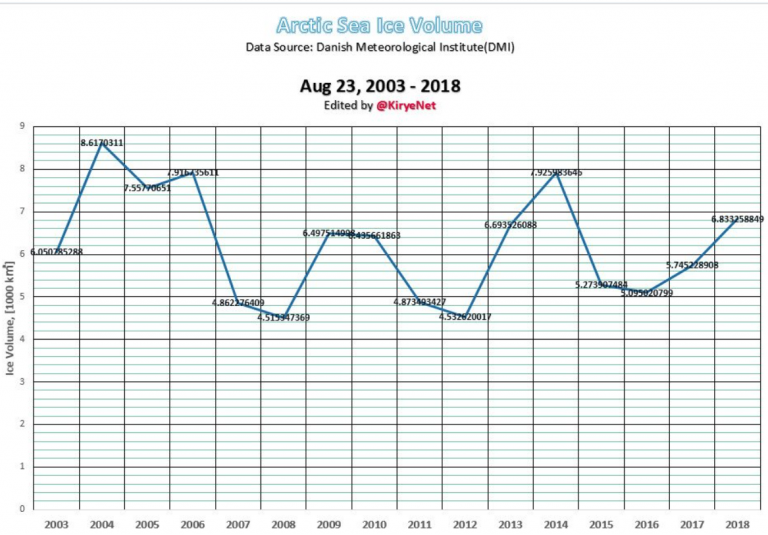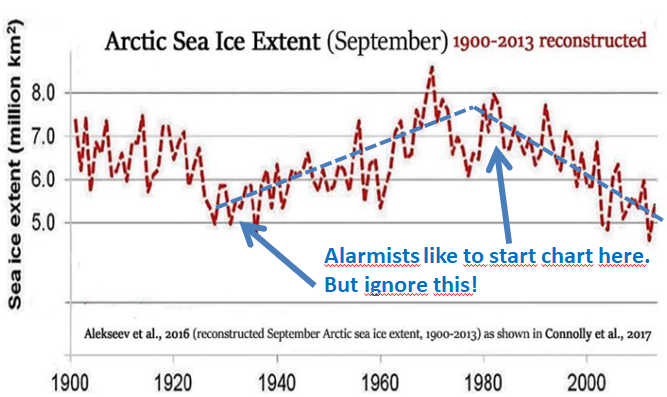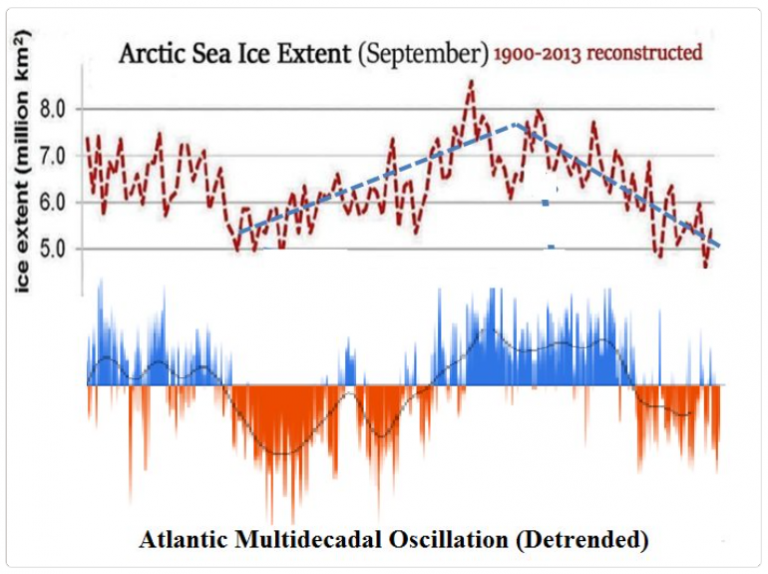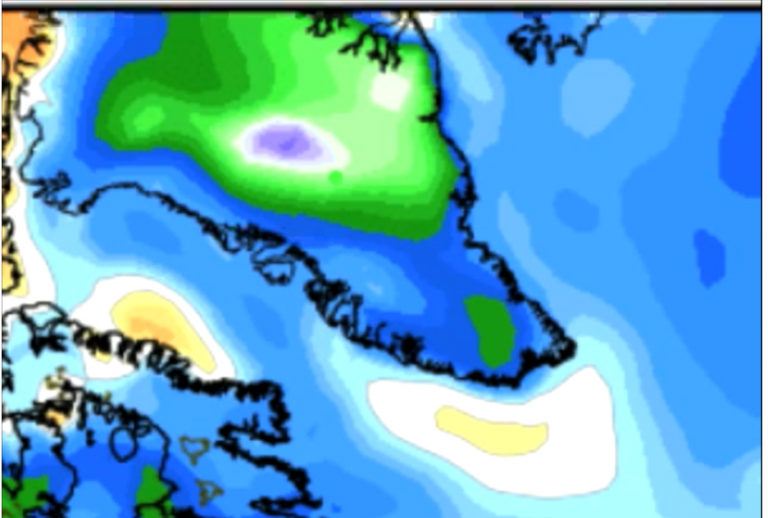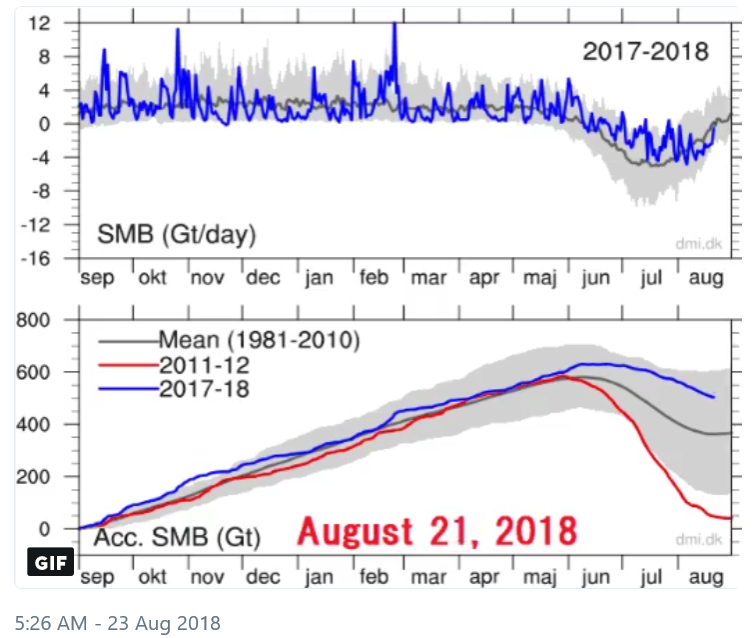As the Arctic summer ice melt approaches its peak, we can say with high certainty that this year’s ice melt will extend the trend of a rebounding Arctic ice mass by another year.
Arctic summer sea ice now growing 12 years
Our Japanese skeptic blogger and good friend Kirye reports using the data from the Danish Meteorological Institute (DMI) that peak summer Arctic sea ice volume upward growth trend has been extended yet another year – now 12 years.
Chart by Kirye. Data source: Danish Meteorology Institute (DMI).
Thus Arctic sea ice melt has defied the hysterical claims of disappearing sea ice made since the release of Al Gore’s climate propaganda film An Inconvenient Truth, shocking a number of experts.
Naturally alarmists, wishing all this good news away, like to roll out the PIOMASS chart to keep the alarms on life support. However, the PIOMASS chart conveniently only goes back to the peak of Arctic sea ice, 1980.
If the alarmists want us to go back and look long-term, then let’s at least go back to 1900. What follows is a chart depicting Arctic sea ice extent going back to 1900:
As the above chart shows, Arctic sea ice extent was similarly low some 90 years ago, a time when atmospheric CO2 was at what we are told are climatically very “safe levels”.
Sea ice has nothing to do with atmospheric CO2
Obviously CO2 has virtually nothing to do with Arctic sea ice extent. Rather it behaves in response to other far more powerful natural cycles, namely oceanic cycles.
The following chart depicts Arctic sea ice volume compared to Atlantic sea surface temperature cycles, called the AMO:
Arctic sea ice extent is clearly driven by the natural temperature cycles of the North Atlantic.
Obviously the correlation between cyclic North Atlantic sea surface temperatures and Arctic sea ice extent are stunningly strong.
Greenland summer: one of the coldest in the past 30 years
Greenland is now seeing very cold temperature anomalies as well, a condition that Joe Bastardi of Weatherbell says will persist for a couple of weeks, tweeting here that there will be “very cold weather for the next 10-15 days”:
Greenland forecast to stay much colder than normal. Image cropped from WeatherBell August 23, 2018 Daily Update.
Summer will be one of coldest in 30 years
Joe in fact later tweeted that the entire Greenland winter as a whole has been a frigid one, and models expect to stay this way another 6 weeks:
Euro very cold across Greenland entire 46 day period on weeklies, What summer there was is over, Likely to be top 5 cold May-October in last 30 years
— Joe Bastardi (@BigJoeBastardi) August 23, 2018
150 billion tonnes of ice above average
Also Greenland’s surface mass balance is way above normal. Kirye reports: “The summer this year appears to have ended in #Greenland. The ice sheet has gained 500 Gt since September 1, 2017, which is about 150 Gt above the 1981-2010 mean.”
Chart: Danish Meteorological Institute.

